Choosing a substrate for your aquarium is often tricky. But finally, after considering water flow, fish species, and aesthetics, you’ve chosen sand.
You also want some beautiful plants to liven up your fish’s habitat. What aquarium plants grow well in a sandy substrate?
Some plants grow in sand better than others because they have different nutrient needs. Plants doing well in aquarium sand are able to get their nutrients directly from the tank water.
If your plant is not thriving in aquarium sand, adding root tabs will help.
#1. Java Moss

Java Moss is a low-maintenance plant and is easy to grow on aquarium sand. It provides good cover for fish and shrimp in your freshwater tank.
Note the distinction this plant lives on the sand rather than in it. You will need to weigh it down until its rhizoids anchor it down.
Java Moss is native to Southeast Asia. This plant is easy to grow and a good choice for novices.
The moss will float away if there is too much current or disruption by fish, but it does enjoy some water movement.
| Maintenance | Low |
| Temperature | 68 – 82° degrees Fahrenheit (28° C) |
| pH | 6.0 – 7.5 |
| Size | 8″ inches |
| Fertilizer required | No |
| Lighting | Low to moderate |
#2. Anubias
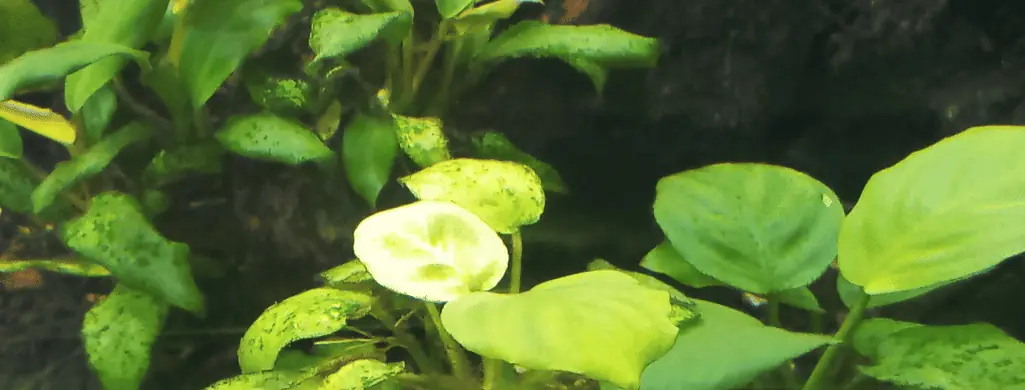
Anubias is another low-maintenance plant species planted directly in aquarium sand. Take care not to bury the rhizomes in the sand.
It is native to tropical regions of Africa.
Anubias plants have many varieties and sizes and do not need fertilization or carbon dioxide to maintain steady growth.
While slower-growing than some aquatic plants, Anubias has beautiful green foliage and is easy to maintain.
| Maintenance | Low |
| Temperature | 72-82° degrees Fahrenheit (28° C) |
| pH | 6.5 to 7.5 |
| Size | 12″ inches |
| Fertilizer required | No |
| Lighting | Low to moderate |
#3. Cryptocoryne
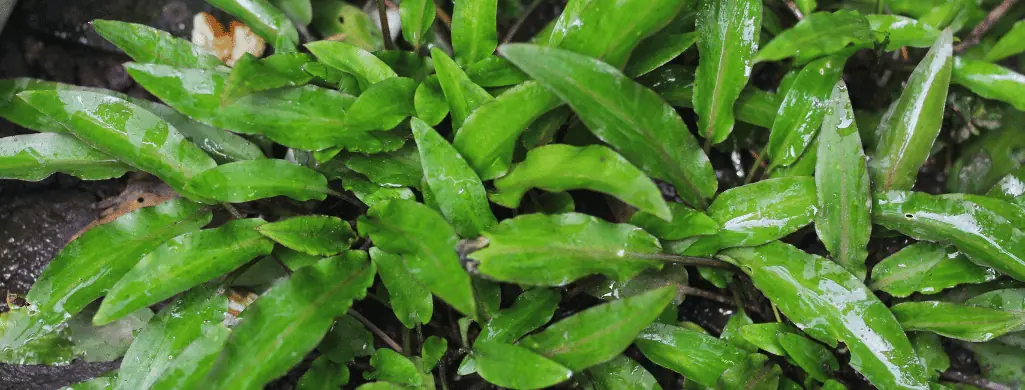
Cryptocoryne is a popular aquarium plant among aquarium hobbyists. It grows well in sand and provides good cover for fish and shrimp in your fish tank.
It is native to Southeast Asia and parts of the Indian subcontinent. It is found growing in a variety of aquatic environments.
Its dark green leaves provide contrast and depth, and it is a good mid-ground planting.
Cryptocoryne has strong plant roots and requires root tabs.
| Maintenance | Low |
| Temperature | 68-83° degrees Fahrenheit (28° C) |
| pH | 6.5 to 7.5 |
| Size | 6 to 12+” inches |
| Fertilizer required | Root tabs, liquid fertilizer |
| Lighting | Low to moderate |
#4. Dwarf Sagittaria
Dwarf Sagittaria is a grass-like plant and grows quickly in sand. It is a good choice for aquascaping and provides cover for fish and shrimp.
This plant propagates through runners and is an excellent option for establishing a carpeted effect.
Dwarf Sagittaria is from North America. It is found growing in shallow waters, such as ponds, marshes, and slow-moving streams.
The care requirements for Dwarf Sagittaria are not too strenuous, and with the addition of nutrients, this plant will thrive.
| Maintenance | Medium |
| Temperature | 70-83° degrees Fahrenheit (28° C) |
| pH | 6.5 to 7.5 |
| Size | 4-12″ inches |
| Fertilizer required | No, but can improve with CO2 |
| Lighting | Moderate |
#5. Amazon Sword

The Amazon sword is an immensely popular plant that grows quite large. It requires a nutrient-rich substrate but can grow well in aquarium sand if provided with root tabs.
When planting the Amazon Sword, bury it firmly in the substrate. Leave the crown exposed.
As hinted at by its name, this plant is native to the Amazon Basin in South America. It is found in slow-moving or stagnant water bodies like rivers, streams, and swamps.
This common starter plant makes a brilliant background aquarium plant with its bushy appearance and wide leaves. It is also an easy-to-grow plant and a common choice for beginners.
| Maintenance | Moderate |
| Temperature | 72-82° degrees Fahrenheit (28° C) |
| pH | 6.5 to 7.5 |
| Size | 20″ inches |
| Fertilizer required | Root tabs, iron |
| Lighting | Moderate |
#6. Vallisneria

Vallisneria is also known as eelgrass or tape grass. This plant has long, narrow leaves and can grow quite tall, up to 20″ inches.
It is native to North America, South America, Europe, Africa, and Asia. Many types of Vallisneria can tolerate a wide range of water conditions.
Plant it directly in aquarium sand as a fantastic background plant because of its height. It will often drape over and provide shelter for smaller fish and fry.
Vallisneria sends out runners to propagate. Daughter plants grow every few inches.
| Maintenance | Low |
| Temperature | 64-82° degrees Fahrenheit (28° C) |
| pH | 6.5 to 7.6 |
| Size | 20″ inches |
| Fertilizer required | No |
| Lighting | Moderate to high |
#7. Hornwort

Hornwort is a hardy floating plant anchored in aquarium sand. It grows very quickly and provides good cover for fish, fry, and shrimp. It also helps to oxygenate the water.
It has a feathery appearance and can create a natural-looking aquascape when arranged with other aquatic plants and decorations.
Hornwort is native to North America, Europe, Africa, and Asia and has been introduced to other regions as well.
It is an excellent plant for beginners, as it is easy to cultivate and grows densely and rapidly. It relies on the water column for its nutrients, so it doesn’t need any fertilizer.
| Maintenance | Low |
| Temperature | 50-77° degrees Fahrenheit (25° C) |
| pH | 6.0 to 7.5 |
| Size | 12″ inches |
| Fertilizer required | No but liquid fertilizers are beneficial |
| Lighting | Low to moderate |
#8. Java Fern (Microsorum Pteropus)
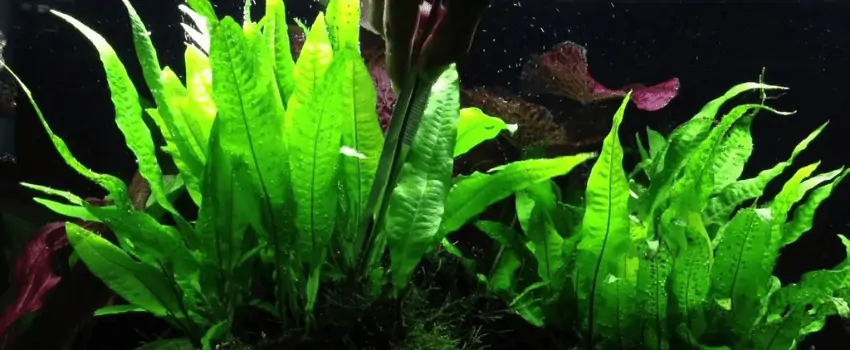
Java Fern is a versatile plant attaching to rocks or driftwood in aquarium sand. It does well in low to medium lighting and is an excellent choice for aquascaping.
The Java Fern is from Southeast Asia and grows in slow-moving or stagnant water bodies.
Do not plant Java Ferns directly into the substrate, as the roots will rot and die. Java fern creates biofilm, hiding places, and safety for your fish.
This plant is minimal maintenance and a good choice for aquariums with fish. It propagates by producing plantlets, or baby Java Ferns, as many as 20 per leaf.
| Maintenance | Low |
| Temperature | 68-82° degrees Fahrenheit (28° C) |
| pH | 6.0 to 7.5 |
| Size | 12-14″ inches |
| Fertilizer required | No |
| Lighting | Low to moderate |
#9. Water Wisteria
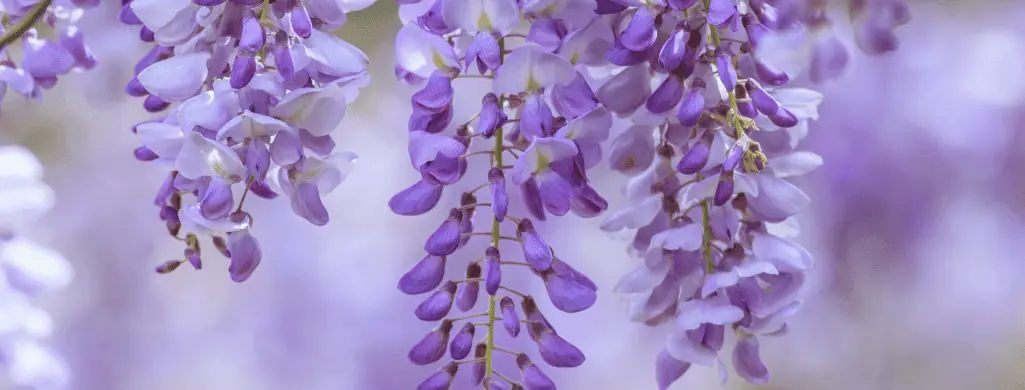
Water wisteria is a fast-growing plant able to grow directly in sand. It provides excellent cover for fish and shrimp and can help reduce water nitrates.
Propagate Water Wisteria using side shoots and cuttings. Wisteria is a shelter for fish and fry and keeps the aquarium water cleaner.
Water wisteria is excellent at improving water quality. It is native to the Indian subcontinent.
| Maintenance | Low |
| Temperature | 70-82° degrees Fahrenheit (28° C) |
| pH | 6.5 to 7.5 |
| Size | 20″ inches |
| Fertilizer required | No |
| Lighting | Moderate to high |
#10. Marimo Moss Ball
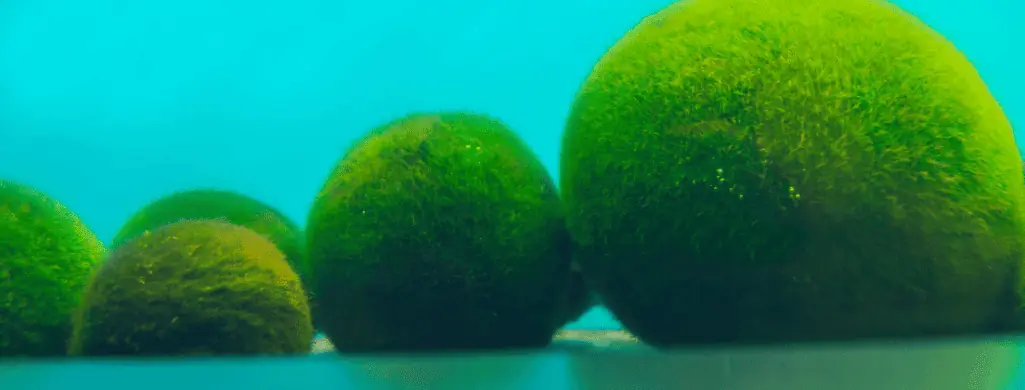
Marimo Moss Ball is actually a type of algae and does not need any substrate at all. Marimo moss ball is also called Lake ball, Lake ball pets, Cladophora ball, and Mossimo.
The Marimo Moss Ball is interestingly native to lakes and rivers in Japan, Iceland, Estonia, and Scotland.
It provides good cover for fish and shrimp and can help to absorb toxins in the water. Marimo moss ball grows in three different forms:
- Free-floating unattached mats – consisting of tufts floating through the water.
- Carpet type (attached growth form) – grows on the shaded sides of rocks submerged in the water.
- Fragmented type or ball type – the least common form.
| Maintenance | Low |
| Temperature | 2″ inches commercially, 8-12″ inches in the wild |
| pH | 7.0 to 8.0 |
| Size | 2″ inches commercially 8-12″ inches in the wild |
| Fertilizer required | No |
| Lighting | low |
#11. Hygrophila Corymbosa
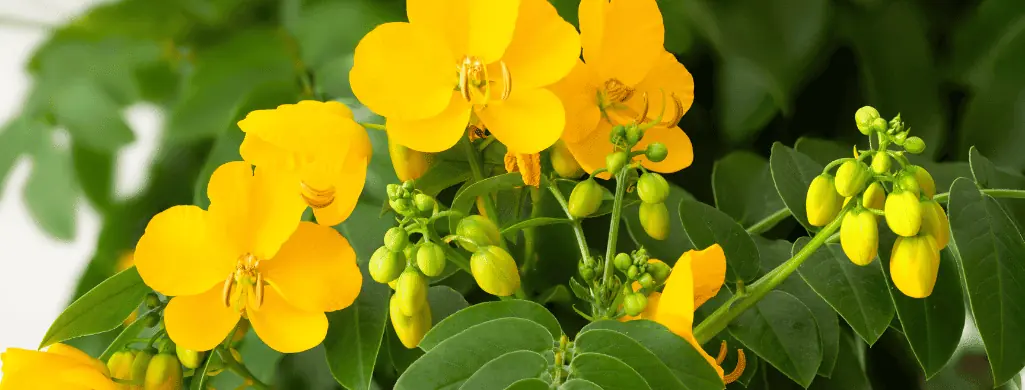
Also known as Temple plant, this plant is easy to grow and is planted directly in aquarium sand. It has slender, ovate leaves and can quickly grow quite tall.
Hygrophila corymbosa is often used as a mid-ground or background plant due to its tall and bushy growth. It is native to Southeast Asia and is found in marshes, swamps, and slow-moving rivers.
The plant’s color depends on the amount of lighting and can change from dark green to pink, red, and purple. This plant is propagated by cuttings.
| Maintenance | Easy, trim weekly |
| Temperature | 72-82° degrees Fahrenheit (28° C) |
| pH | 6.5-7.5 |
| Size | 16″ inches |
| Fertilizer required | liquid fertilizer |
| Lighting | moderate to high |
#12. Cryptocoryne Wendtii
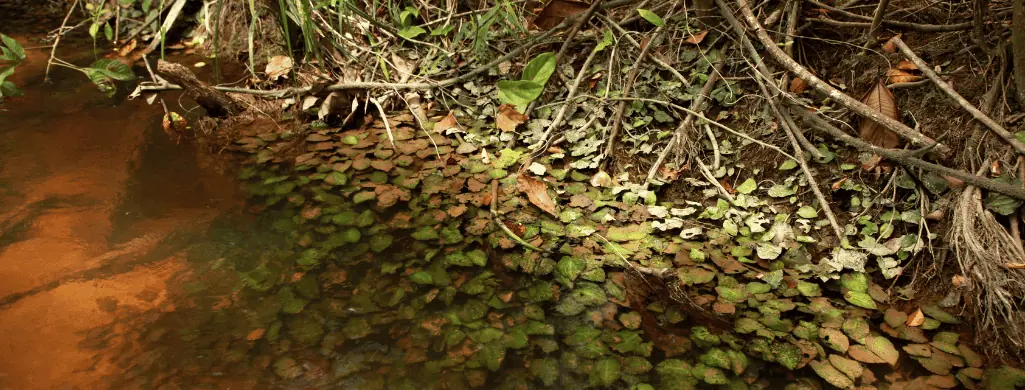
This is a low-growing plant growing in sand and aquarium gravel. It is deep green and can provide good cover for fish and shrimp.
Native to Sri Lanka, Cryptcoryne Wendtii has a good strong root system. It is a popular plant because it is easy to care for and grows in low light.
This plant makes an excellent midground addition to your aquarium.
| Maintenance | Low |
| Temperature | 72-82° degrees Fahrenheit (28° C) |
| pH | 6.0-8.0 |
| Size | 4-14″ inches |
| Fertilizer required | root tabs |
| Lighting | low to moderate |
#13. Monte Carlo (Micranthemum)
This aquarium plant grows well in sandy substrate. It has small, round leaves and creates a lush, green carpet in the aquarium.
Originating in Argentina, the Monte Carlo plant is perfect for foreground planting. Propagation is by cutting new growth along with the roots.
This plant is very good for shrimp and other bottom dwellers. Fish such as the Corydoras catfish enjoy aquarium carpeting plants.
| Maintenance | Medium |
| Temperature | 68-77° degrees Fahrenheit (25° C) |
| pH | 6.0-7.5 |
| Size | 1-2″ inches |
| Fertilizer required | CO2 |
| Lighting | Medium to High |
#14. Dwarf Hairgrass
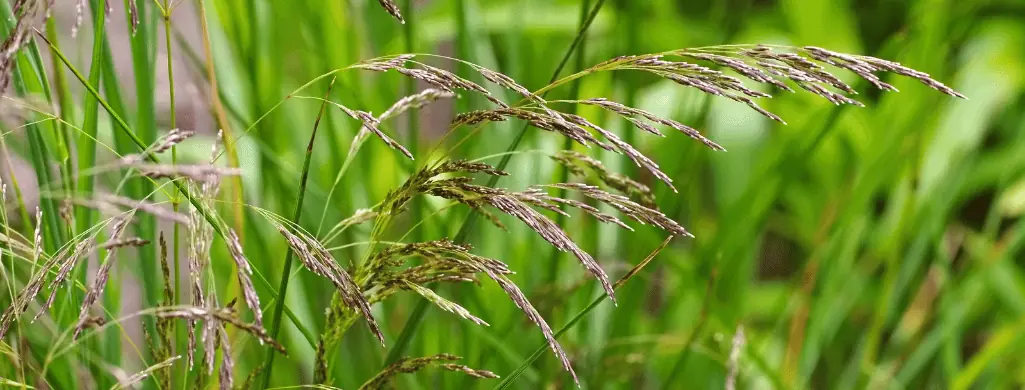
This is another carpeting plant growing in sand substrate. It has long, thin leaves and can create a grass-like appearance in the aquarium.
Dwarf Hairgrass is native to North America.
Propagation is by runners. In aquariums, Dwarf Hairgrass is often used as a foreground plant due to its small size. See our list of other small aquarium plants here.
Maintenance is easy, but this plant does need constant care in trimming, removing dead matter, and planting.
| Maintenance | Low |
| Temperature | 50-85° degrees Fahrenheit (29° C) |
| pH | 6.5-7.5 |
| Size | 6″ inches |
| Fertilizer required | benefits from CO2 |
| Lighting | moderate to high |
#15. Rotala Indica
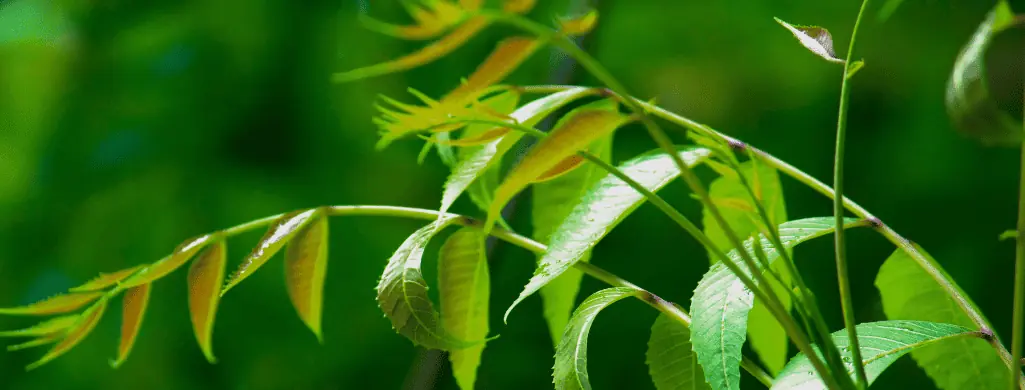
This is a stem plant to plant directly in sand. It has narrow leaves and can grow up to 20 inches tall.
Rotala Indica also goes by the name “Indian Toothcup,” and is native to India and Southeast Asia. It propagates by seeds and cuttings.
It has a bright green to pinkish coloration and can add a striking visual element to the aquarium. This plant is best placed in the background due to its rapid growth.
| Maintenance | Moderate, needs trimming |
| Temperature | 72-82° degrees Fahrenheit (28° C) |
| pH | 6.0-7.5 |
| Size | 12″ inches, will grow longer if allowed |
| Fertilizer required | liquid or root tabs |
| Lighting | low to moderate |
#16. Bucephalandra
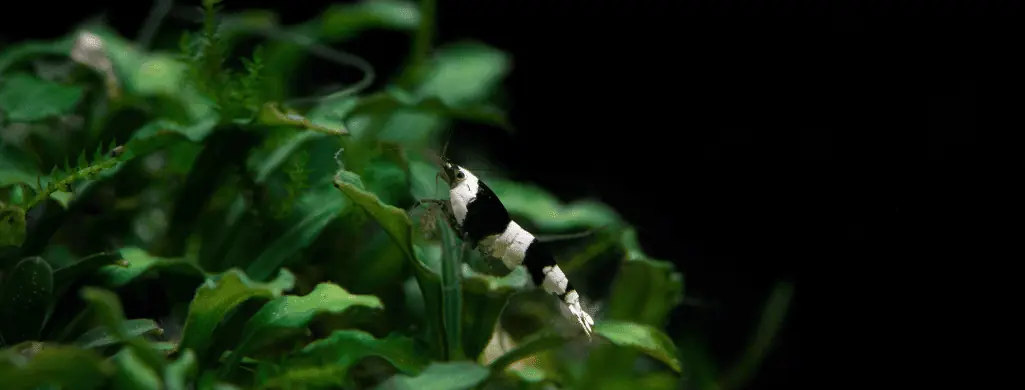
This is a slow-growing plant to attach to rocks or driftwood in sand. It has small, round leaves and comes in various colors and patterns.
Bucephalandra is native to Borneo, which is in Southeast Asia.
Bucephalandra blooms with small white or pink flowers. It propagates by rhizomes.
Due to its slow growth, this plant is good in the foreground of your aquarium or attached to rocks or driftwood in the midground. It has an extensive root system.
| Maintenance | low |
| Temperature | 71-82° degrees Fahrenheit (28° C) |
| pH | 6.0-7.5 |
| Size | 10″ inches |
| Fertilizer required | liquid or root tabs |
| Lighting | low |
#17. Water Sprite
This is a floating plant sometimes anchored in sand substrate or allowed to float freely in the water column. It has feathery, light green leaves and can provide good cover for fish and shrimp.
It is a fern-like plant native to Southeast Asia. It is found throughout the world in tropical and subtropical regions.
Other names for this plant include Oriental Waterfern, Indian Fern, Water Fern, and Water Hornfern. It is a good mid-to-background plant.
Little plantlets, or daughter plants, will grow and break off from the main plant to propagate. It is a good beginner plant for ease of care and how beautiful it looks.
| Maintenance | low |
| Temperature | 68-80° degrees Fahrenheit (27° C) |
| pH | 7.0-7.5 |
| Size | 13-14″ inches |
| Fertilizer required | liquid fertilizer |
| Lighting | low to moderate |
#18. Christmas Moss (Vesicularia montagnei)
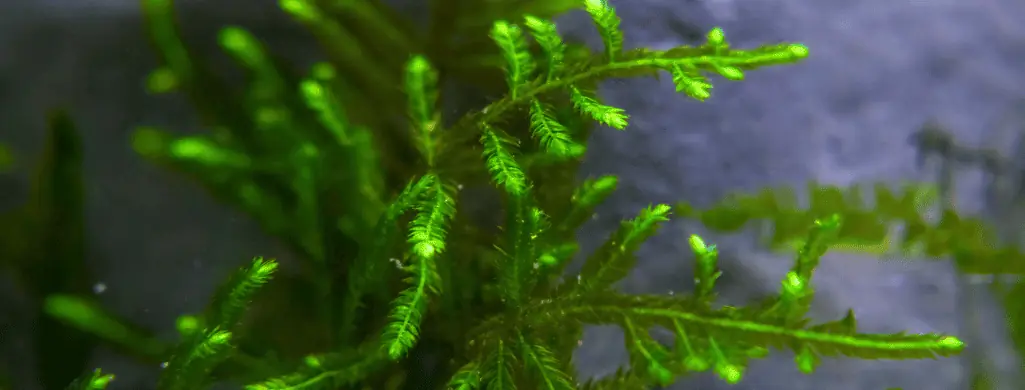
This is a slow-growing moss attached to rocks or driftwood in sand. It has small, branching stems and can create a lush, green texture in the aquarium.
Christmas moss provides a wonderful protection for fish fry. It is a very hardy plant and will tolerate a variety of aquarium water parameters.
This plant is native to tropical Asia. Propagation is through division.
| Maintenance | Low |
| Temperature | 65-77° degrees Fahrenheit (25° C) |
| pH | 5.0-8.0 |
| Size | 4″ inches |
| Fertilizer required | No |
| Lighting | low to moderate |
#19. Anacharis Elodea
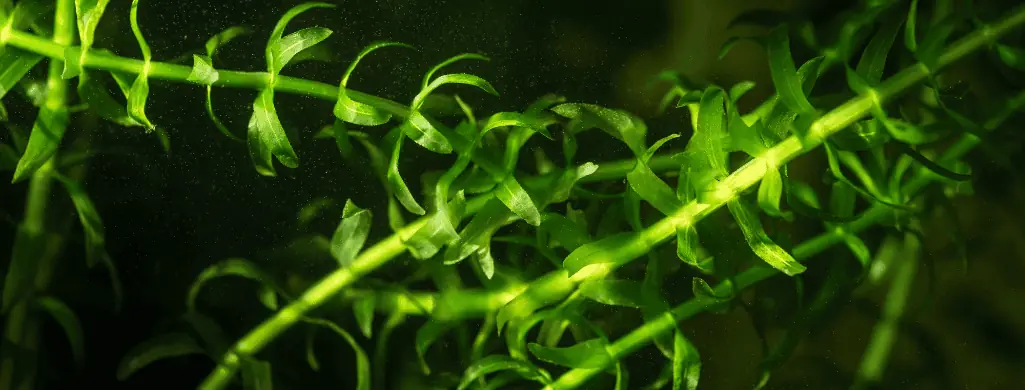
Anacharis is a quick-growing, tall plant providing shelter for shy fish and fry. It also goes by the names Brazilian Elodea, Brazilian Waterweed, and Egeria.
Native to Southeast Brazil, Uruguay, and Argentina, Anacharis has invaded the Americas and other parts of the world.
It is a perennial plant living in ponds, lakes, and slow-moving waters. Anacharis is banned in some states as it clogs waterways and crowds out native plants.
This plant propagates by cutting and is better as a background plant due to its height.
Anacharis requires frequent trimming as it will overtake your tank easily and block light from lower-dwelling plants by floating on the water surface.
| Maintenance | Low, but needs frequent trimming |
| Temperature | 59-82° degrees Fahrenheit (28° C) |
| pH | 6.5-7.5 |
| Size | 36″ inches if left untrimmed |
| Fertilizer required | No |
| Lighting | moderate |
#20. Cabomba
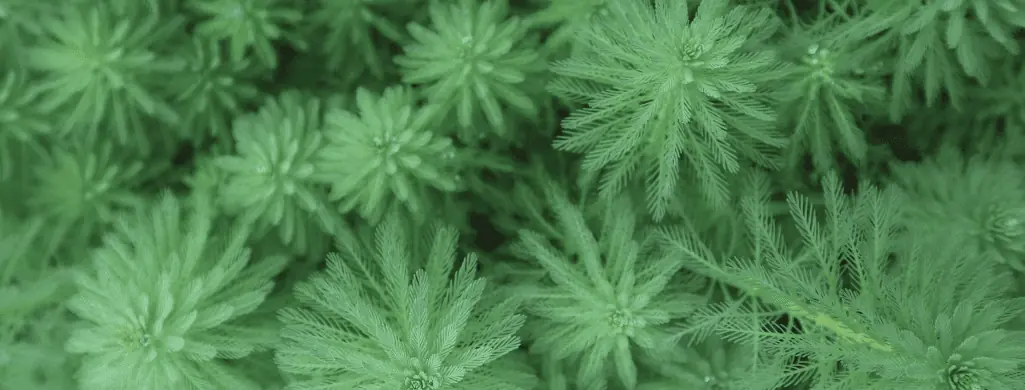
Cabomba is grown as a floating plant in the water column or anchored to the substrate. It is relatively easy to care for and can tolerate a wide range of water conditions.
Cabomba is native to North and South America.
This plant has delicate, feathery leaves divided into narrow segments. The leaves are arranged in whorls along the stems, which are green or reddish.
Propagation of this plant is done by cutting. Cabomba makes an attractive background plant.
| Maintenance | Moderate |
| Temperature | 60-82° degrees Fahrenheit (28° C) |
| pH | 6.0-7.5 |
| Size | High |
| Fertilizer required | Liquid fertilizer, root tabs, CO2 |
| Lighting | HIgh |
Growing Plants in Sand
There are a few challenges to growing plants in the sand as a substrate. Sand is dense and may prevent a plant from growing a strong root structure.
Many plants end up loosening from the sand and becoming floating plants.
Aquarium sand is not a nutrient-rich substrate and often requires root tabs to grow plants relying heavily on root feeding.
On the other hand, sand allows you to aquascape in various ways because it is lighter than soil and rocks. It is also often the cheapest option.
Fish species such as the Corydoras catfish require a sand substrate to engage in their natural behaviors. A larger-grained substrate would damage their gills.
There are plant species growing in sand in nature as well. Those locations generally have mixed soil, providing the nutrients the plants need.
What Types of Plants Grow Well in Sand?
Out of the wide variety of aquarium plants available, there are many to plant in the sand.
Plants pulling most of their nutrients from the water column do well in sand. Liquid fertilizer and CO2 supplements will help with their growth.
Plants pulling most of their nutrients from the substrate have a more difficult time and often require root tabs to maintain their growth and beautiful colors.
Wrapping It Up
While most plants prefer a nutrient-dense substrate such as aquarium soil, some can grow just fine in sand.
Some plants, such as the Marimo Moss Ball, don’t need a substrate at all and are perfectly happy to float in the tank.
With proper care, just about any plant can thrive in sand and create a more natural appearance for fish. With fertilizer, root tabs, and the occasional CO2 injection, your aquarium will be amazing.
For more about aquarium plants, visit our plant tips page.
If you liked this article, please share it on social media!


